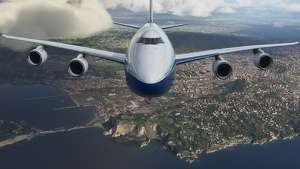
2020 was a big year for Microsoft Flight Simulator. After a decade and a half away, Microsoft’s partnership with French studio Asobo delivered a sterling return to the world of hardcore simulation, and a little more besides – centred around a feat I still haven’t tired of as I explore new corners of the world. It harnessed the breadth and depth of Microsoft’s technical expertise, from Bing to Azure, to create a truly breathtaking 1:1 replica of the entire globe. Small wonder it ended up being one of my – and many others – games of the year.
“[The reception] has been so generous,” head of Microsoft Flight Simulator Jorg Neumann tells me over Microsoft Teams (naturally) of the sim’s first few months. “When you come back after 14 years, you wonder how you’re going to be received. You were gone for a while, the segment has moved. But I would say the simmers have been so gracious – so gracious. There’s still some that say we need to be more study level – we know, we understand. we’re committed, don’t worry about it. But those are people that are in the hobby, and I think they see the promise of what this is now and what it will be.
“I think we had a lot of people that have never played a sim before, which is great – and quite a few of them stuck around. We knew VFR [visual flight rules – an aviation term referring to when a pilot is able to navigate by the scenery rather than relying on instruments] was always something that people wanted – and it makes the sim more accessible. All of a sudden, you can look outside, it actually looks like the world, it’s not abstract. I think it’s resonated more, maybe because of the travel restrictions – and all those things that come with a pandemic, but that we see now where people are actually diversifying where they fly.”
